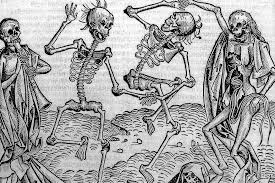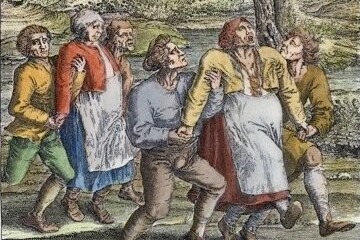Throughout the 15th and 16th centuries, a peculiar and terrifying illness swept through England, leaving fear and devastation in its wake. Known as the Sweating Sickness, this mysterious disease claimed thousands of lives, confounded physicians, and etched itself into Tudor history.
What Was Sweating Sickness?
First appearing in 1485, coinciding with Henry Tudor’s rise to power after the Battle of Bosworth, the illness struck with alarming suddenness. Victims initially experienced chills, dizziness, and severe headaches, followed by profuse sweating and an overwhelming sense of dread. Death often came within hours, earning the disease its reputation as one of the most lethal plagues in history.

The Symptoms and Stages
Sweating Sickness progressed rapidly through four distinct stages:
- Cold Stage: Chills and shivering.
- Hot Stage: Intense fever and sweating.
- Sweating Stage: Profuse sweating, accompanied by exhaustion and heart palpitations.
- Collapse: Victims either succumbed or survived after enduring intense fatigue.
Why Did It Appear?
The cause of Sweating Sickness remains a mystery. Theories suggest:
- Infectious Disease: Possibly a hantavirus transmitted by rodents.
- Environmental Factors: Overcrowded urban centers and poor sanitation in Tudor England may have facilitated its spread.
- Political and Social Stress: Some historians speculate that stress from civil unrest and war weakened the population’s immunity.
Notable Outbreaks
The disease ravaged England in several waves, with outbreaks recorded in 1485, 1508, 1517, 1528, and 1551. Particularly notable was the 1528 epidemic, which spread to continental Europe. Even prominent figures, including courtiers and nobility, fell victim, demonstrating its indiscriminate nature.

The End of an Era
After the 1551 outbreak, Sweating Sickness mysteriously disappeared, never to resurface. Its abrupt vanishing is as puzzling as its origins. Theories abound, but none definitively explain why it ceased to haunt Tudor England.
Legacy and Modern Parallels
Sweating Sickness left a lasting impression on history, influencing medical practices and shaping public health responses. It serves as a grim reminder of humanity’s vulnerability to emerging diseases.
Today, the mystery surrounding Sweating Sickness sparks the curiosity of historians and epidemiologists alike, as they strive to uncover clues about this enigmatic Tudor-era killer.
Conclusion
The Sweating Sickness remains one of the great medical mysteries of history—a deadly specter that appeared without warning, killed without mercy, and disappeared without explanation. It’s a haunting tale that underscores the fragility of life in a time when science and medicine were still in their infancy.


